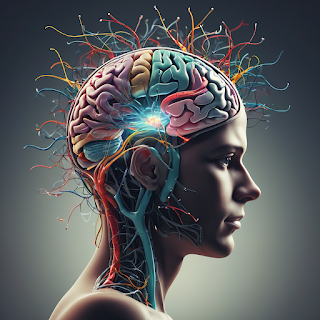Empower your brain software through Neuroplasticity
There are pervasive changes occurring in human’s life cycles that govern their physical and mental wellbeing. Aging is a natural process and individuals have to confront intricate challenges as they switch from one phase of life to another. Entering into the middle age period, the brain is enormously impacted by weakening of nerves and other physiological systems that can lead to cognitive waning and inability to perform usual tasks. To address such important health issues, individuals must be conscious and initiate preventive measures to resume a healthy brain to stay an energetic human being for the rest of life.
To
enhance brain power, neuroplasticity is the effective process in which the
nervous system perfectly identifies structure, functions, or connections to
transform its activity through intrinsic or extrinsic stimuli. In the same
vein, neuroplasticity trains the brain to constantly refurbish itself and
acclimatize its connections to prevent memory loss and other cognitive
deficits.
Neuroplasticity
is not age specific, it is a continual process of change in brain functions,
connections and structures. Brain of youngsters is more active and responsive
to external stimuli as compared to the adult brain. Some changes in rain
nerves occur in certain phases of life such as memory fading in elderly age.
But the adult brain can be adaptable through neuroplasticity. In
neuroplasticity, individuals indulge in new learning, changing their activity,
memory formation, work sincerely in hobbies or train their brain to embrace new
things that can sooth them. Such transformative actions and experience enrich
brain nerves and equip a person to rejuvenate their lifestyle. People may
have feelings of excitement, free from mental obstruction and invite
challenging tasks that can be achieved for them in a greying period.
Neuroplasticity, rewire or modify neural makeup of the brain, can be highly
beneficial in brain damage or mental deformities. In the state of anxiety and
depression, neuroplasticity works well to empower the mental health of a
person. Neuroplasticity can help to regain brain function when a person
undergoes traumatic brain damage or severe brain impairment.
To
improve neuroplasticity, individuals must breathe in a healthy environment
where they can get a spectrum of opportunities for learning, experiencing
pleasant moments and experimenting new things to refurbish brain cells. Few
examples can be cited as learning foreign language, commenting or sharing creative
ideas on political or social online portal to dig out the prowess of a person
that was masked, and voyage to exciting or challenging trips (Dark tourism).
Cognizance of surroundings, involvement in creativity and cracking puzzles or
playing online games can considerably strengthen brain software that will serve
as a bedrock of human survival. Neuroplasticity is an incredible process in
psychological intervention during mental health syndromes. Patients who receive
therapeutic sessions of neuroplasticity may nicely learn coping skills to
manage life hurdles. With neuroplasticity, people are well equipped to maintain
emotional balance and grasp new habits to transform their daily activities
which will boost their mental health.
Ending note:
Neuroplasticity
commands brain software to bring revolutionary changes in neural circuitry as
people age to transform the structure and brain functions. With the functional
and structural changes in the brain, individuals are mentally empowered to
learn new concepts, improve memory and enhance quality of life in later stages
of life.
Important note:
Above informative themes are based on environmental data and reflect the
writer's inner views. Any resemblance is just a coincidence. Writer is not
responsible for any disagreement.


Comments
Post a Comment